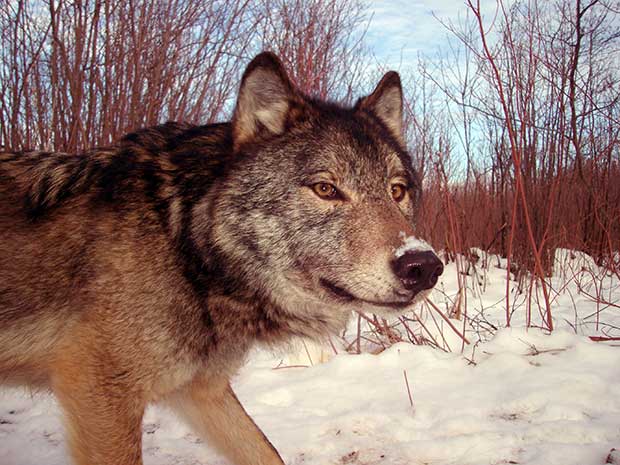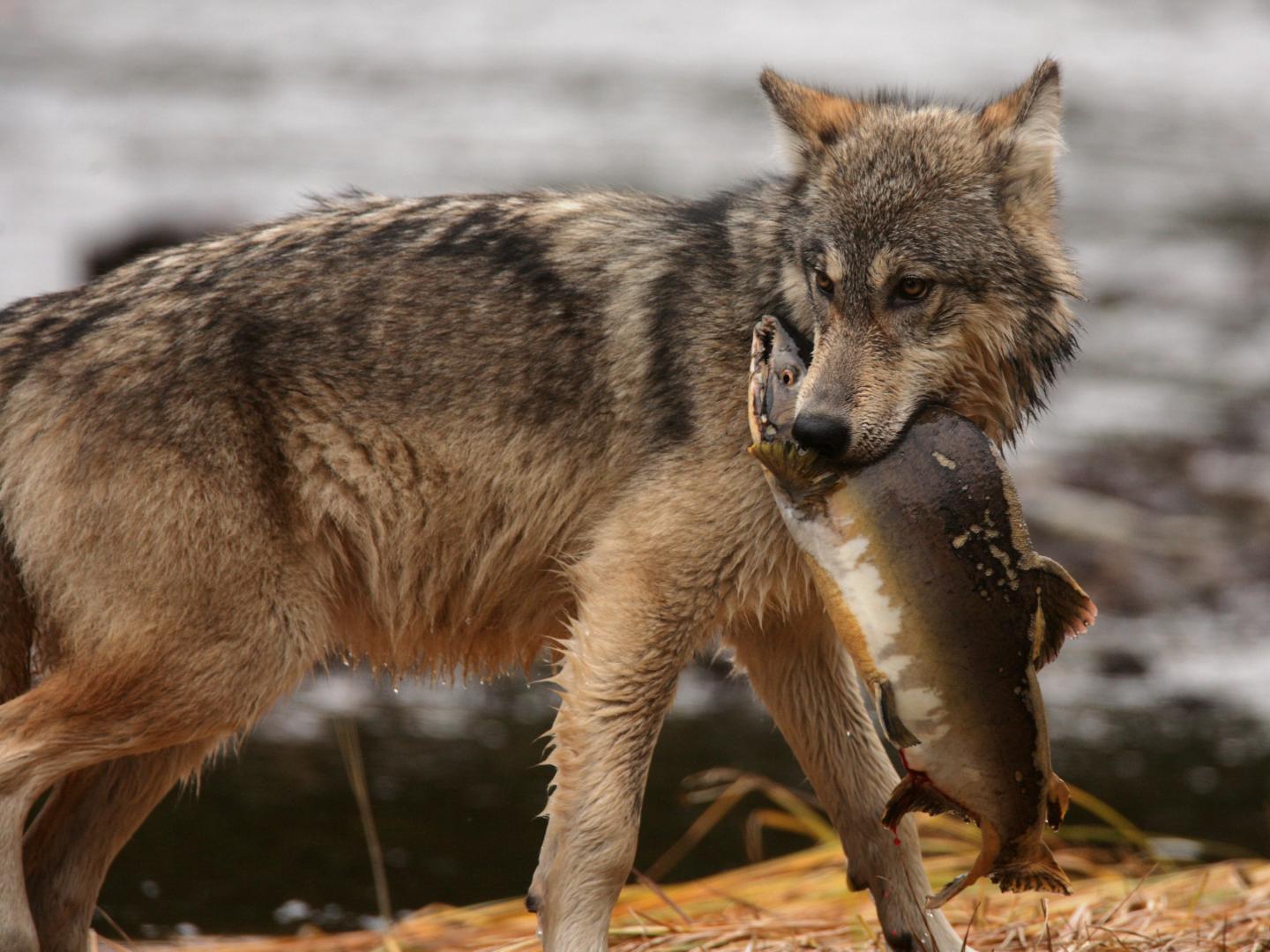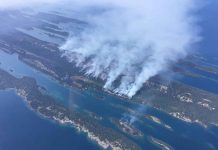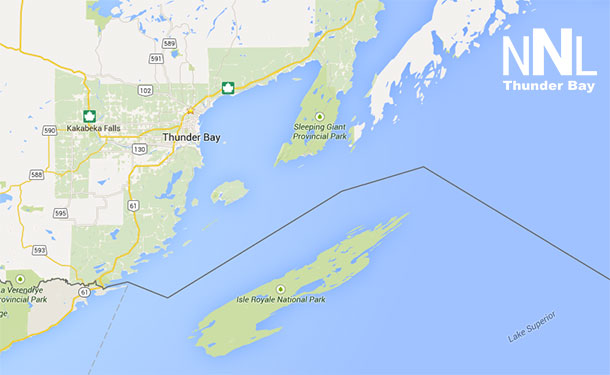 HOUGHTON, MICH.- Each year the NPS supports a Michigan Tech University (MTU) study to evaluate the trends in wolf and moose populations at Isle Royale National Park (Park). This important work occurs during the winter, as it allows for direct observation of the species through aerial overflights when the tree cover is at its minimum.
HOUGHTON, MICH.- Each year the NPS supports a Michigan Tech University (MTU) study to evaluate the trends in wolf and moose populations at Isle Royale National Park (Park). This important work occurs during the winter, as it allows for direct observation of the species through aerial overflights when the tree cover is at its minimum.
The 2016 Winter Study observed the tracks of two wolves on the island, down one wolf from the previous year. The two remaining wolves are believed to be animals that share a common mother and the remaining female is the daughter of the remaining male, suggesting significant impediments to reproductive success. These wolves are estimated to be 6 and 8 years old, respectively. Wolf numbers have been declining for some years, a function of loss of immigration of animals across ice bridges from the mainland and mortality.
Moose populations have experienced dramatic swings, both upwards and downwards over the years. These shifts can be explained by changes in forest type, weather severity, disease, and changes in predation pressure.
The moose population was at an all-time low in 2005 with 540 animals. MTU scientists concluded that the declines were likely associated with “Climate warming and increased ticks….” which in turn were thought to result in low levels of moose recruitment (birthrates). Forest succession might also explain some of the decline”. (Vucetich, JA and Peterson RO. 2012. The population biology of Isle Royale wolves and moose: an overview. URL: www.isleroyalewolf.org).
However since that time, moose numbers have grown with an estimated abundance this year of 1300 (+ – 390 moose). In addition, Dr. Peterson was able to note a higher percentage of twin calves in this year’s study, predicting that it may bolster the population. Twins are normally a result of moose being well nourished and exposed to limited predation stresses. The survey data on moose shows that the population is still on the increase; however, this is a different trend than what is being found in Minnesota and suggests that there could be differing factors impacting moose at the Park than on the mainland. Continued investigations may be warranted to determine long term trends of moose and how the Park population differs from those in Minnesota, where declines are notable.
The study also indicated that winter ticks, which can impact moose, have continued to decline since their peak in 2007. Tick abundance fluctuates with weather conditions and declines were observed with the cold long lasting winters of 2013 through 2015. The 2015/2016 winter was preceded by a warm fall and a late arriving winter and thus this change will help determine if residual tick populations determine the tick numbers in the following months or whether ticks fluctuate in response to short-term climatic changes.
Marten tracks were again observed during the winter of 2016. Marten were absent in surveys conducted from 1959-1990 but have been reported in all but three years since then. Marten as a whole have experienced declines nationally associated with habitat loss and trapping.








